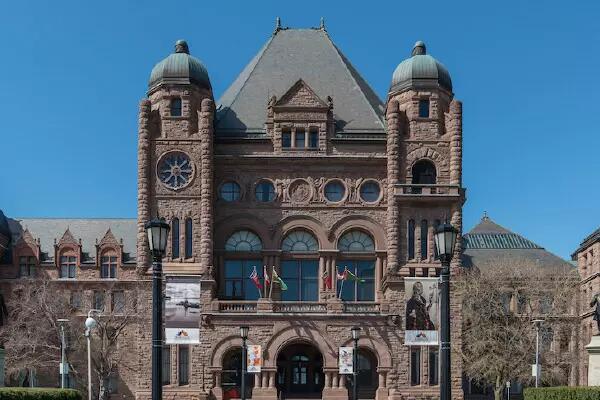We ratified our collective agreement!

Highlights of the collective agreement
Term
- A three-year term from April 1, 2025 to March 31, 2028
Salary
- Under this new agreement, AMAPCEO-represented employees will receive the following across-the-board increases to both individual salaries and to all salary ranges:
- 2.75% on April 1, 2025 (retroactive)
- 2.25% on April 1, 2026
- 2% on April 1, 2027
- Merit pay provisions of up to 5% will continue as before.
Benefits
A 38% increase to the annual Health Care Spending Account
- Effective April 1, 2025, the new agreement sees the Employer increased the amount of the Health Care Spending Account from $525 per year to $725 per year for all eligible employees.
The Health Care Spending Account is an Employer-paid, tax-free fund you can use to cover many eligible medical expenses not covered (or not fully covered) under our benefits plan.
Significant improvements to mental health coverage
Effective April 1, 2025, the new agreement sees the annual maximum for mental health coverage increased from $1,600 to $3,000.
Under the new agreement the per-half hour is eliminated (though subject to the insurer’s per visit reasonable and customary charges)
Coverage now includes services from a qualified psychotherapist, qualified social worker, qualified therapist, or qualified counsellor, if their services would otherwise be provided by a psychologist.
Wigs for those with alopecia or undergoing chemotherapy
Benefits now includes two wigs per calendar year, to a maximum of $1,000 per wig, for those with alopecia areata, genetica, or totalis; and those undergoing chemotherapy.
Alternative work arrangements
Preserved AMAPCEO members’ rights to:
request an Alternative Working Arrangement (AWA) —including compressed work weeks, flexible hours, telecommuting/telework and more;
have that request considered in good faith; and
file a dispute if that request is denied.
All existing formal alternative work arrangements will continue to be in force.
New telecommuting/telework AWA requests will now be submitted to a member’s Director for approval. Requests for compressed work weeks (1-, 2-, 3- or 4-week models) or other alternative work arrangements will continue to be approved by your local manager.
Fixed-term employees
As of January 1, 2026, new fixed-term employees will receive 5 days’ vacation and attendance credits when they start their contract. This is up from the current 3.75 (negotiated in the 2022–2025 collective agreement, and up from 0 before that).
If you are a fixed-term employee and you start a new fixed-term assignment (and the classification has the same salary maximum, and there’s no break in service between the assignments), you will retain, at a minimum, your current salary and anniversary date.
A one-time opportunity for fixed-term employees who have opted into the supplementary health and hospital plan and/or the dental benefits plan to opt out.
Equity
Indigenous employees now have the option to choose an Elder, Traditional Knowledge Keeper, or Métis Senator to accompany them for support during the dispute resolution process in addition to an AMAPCEO Workplace Representative.
To continue the work of the Joint Equity, Inclusion, and Anti-Racism Sub-Committee, AMAPCEO and the Employer will make Equity, Inclusion, and Anti-Racism a standing agenda item at every AMAPCEO-Central Employee Relations Committee meeting.
Artificial intelligence (AI)
Under the new agreement, AMAPCEO and the Employer will add AI to the agenda at every AMAPCEO-Central Employee Relations Committee meeting to discuss any potential impact of AI on AMAPCEO employees.
Other changes
Minor, procedural, or housekeeping changes to:
Article 13 (Bulletin Boards),
Article 15 (Dispute Resolution Procedure),
Article 23.6 (Military Leave) [and accompanying FXT.12],
Article 27 (Job Security),
Article 36 (Long Term Income Protection),
Article 46 (Hours of Work), and
the Memoranda of Agreement on:
Co-operative Education Program,
Corporate Internship Program, and
Transition and Reskilling.
A new Letter of Understanding committing to reactivating Article 15.9 (Joint Review Process) in Article 15 (Dispute Resolution Process) to speed up the dispute resolution process.
The removal of:
the Letter of Understanding on the Joint Equity, Inclusion, and Anti-Racism Sub-Committee (see ‘Equity,’ above); and
the Memorandum of Agreement on the Internationally Trained Professionals Internship Program.
These are outlined in the Memorandum of Settlement.
Your OPS Bargaining Team
- Dave Bulmer, President/CEO
- Zahra Bolouk, University District
- Jennie Miller, Midtown District
- Adam Nagler, Bay District
- Vickie Nielsen, Northern Ontario District
- Julie Reeder, Eastern Ontario District (Chair)
Learn more about your OPS Bargaining team in the news article "Ready to stand together and win together"



